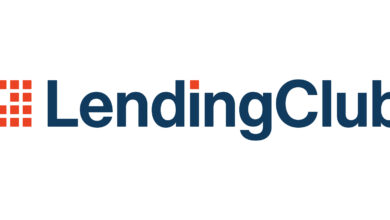Banking-as-a-service middleware is going ‘direct.’ What does that mean?

The banking-as-a-service, or BaaS, middleware space is all about going direct.
The definition of “direct” is still blurry. Some players in this space —
Regardless, there is widespread recognition that financial institutions in this space
“Direct versus indirect is not the question,” said Jonah Crane, partner at Klaros Group, who finds most middleware companies have largely been facilitating direct relationships between banks and fintechs over the past couple of years. “The real question is, who is doing what?”
“The easiest way to manage risk is to get closer to it,” said Crane.
Providers including Synctera, Treasury Prime and Unit have adapted over the past few months and increasingly taken themselves out of such tri-party contracts. But the question of how middleware providers can survive in a space where banks are more skittish about offloading some degree of oversight is looming larger after one of the earliest players in this space, Synapse, filed for bankruptcy. Instant payments company TabaPay then pulled out of its deal to acquire Synapse’s assets. (Synapse founder Sankaet Pathak did not respond immediately to a request for comment.)
Still, industry observers find that
The BaaS middleware model is not broken, said Kirsten Muetzel, who advises banks on financial risk management and compliance as founder and principal of KLM Advisory and was previously chief risk officer of Synctera, where she still has stock options.
“The problem is that regulators have found a few banks out there that completely abdicated responsibility for their oversight of these middleware providers and partners,” she said. For community banks, which tend not to have large, sophisticated risk management personnel, the BaaS provider “[is] augmenting, not replacing.”
The economics of the business are changing as well. Banks may incur more compliance-related costs if they remain committed to this space.
“Middleware providers will have to focus on the core value they provide, which is the transference of data and information,” said Jason Henrichs, founder and CEO of community bank consortium Alloy Labs Alliance. “You can’t charge for services the bank will have to duplicate anyway.”
What it means to go direct
Itai Damti, the co-founder and CEO of four-year-old Unit, sees three pieces to Unit’s role in the bank-fintech relationship.
One is technology services, where nonbank clients will use Unit’s application programming interfaces to download customer account statements or request a debit card. Another is managed services, such as producing and filing 1099-INT tax forms on behalf of the fintech client. The third is exchanging communications between banks and fintechs in a standardized way. For instance, if the fintech wants to raise ACH limits for a specific client, Unit will explain the reasoning to the bank, gain approval and relay this approval back to the fintech using its template.
The third piece is changing so banks and fintechs can communicate without as much participation from Unit. Banks can apply any templates for program launches or changes instead of using the Unit template. Unit is also introducing more features into its oversight dashboard that let the banks and clients communicate without contacting Unit so, for example, a fintech could eventually request a limit change for its client in the Unit dashboard and receive approval from the bank — with an auditable paper trail on top of that.
“We are increasingly stepping out of the communication loop and asking the parties to talk without relying on us,” said Damti. As he has seen regulators raise their expectations from partner banks, “We don’t want to take the risk that Unit might forget to say something or ask a question. This direct exchange allows the bank to have full control and visibility into the client’s line of reasoning,” he said.
Blue Ridge Bank, Choice Bank and
Six-year-old Treasury Prime thinks of itself as a software provider that lets banks put rules into place that manage their fintech partner relationships. Fintechs use its APIs to open bank accounts, issue cards, send ACH and wires and more.
“When Jim [Brusstar] and I founded Treasury Prime we had the idea that we would focus on the operational, legal and contractual risk management associated with banking in general and we were explicitly not going to handle any compliance ourselves,” said co-founder and CEO Chris Dean. “Our first clients were banks. The banks had their own fintech relationships.”
About four years ago, banks started asking Treasury Prime to act as their sales arm as well, so the company closed some deals through tri-party agreements between the bank, the fintech and Treasury Prime. Toward the end of 2023, that line of business started fading away as banks preferred to close their own deals for compliance reasons. Treasury Prime did away with this arm entirely in February — which prompted the layoffs reported that month.
“You started to see the cost of the relationship increase dramatically as the regulatory environment tightened up,” said Dean. “Regulators did not like this three-way agreement at all.”
Synctera describes itself as a marketplace for banks and fintechs to form relationships and a system of record when these relationships form. It provides APIs for accounts, payments and lending, and tools to manage operations, compliance and data needs. Coastal Community Bank in Everett, Washington, was its
The company has historically signed tri-party agreements with the bank, fintech partner and itself. More recently, it has offered other contracting models including the ability for a bank to contract directly with a fintech and for fintechs to use Synctera’s platform while seeking relationships outside of its bank network. In all versions, the bank maintains direct oversight rights and accountability of fintech partner compliance, says Synctera.
“Direct bank supervision, in its most abstract terms, means, does the bank know what is happening with end consumers and do they understand the KYC and all their transaction obligations?” said Peter Hazlehurst, co-founder and CEO of Synctera. “Technology sat in the middle to make that possible.”
Some new entrants to the general BaaS technology space frame “direct” differently.
Braid, which launched in November 2022, licenses software to banks that want to bring their fintech payment processing operations in-house rather than using a third-party processor or BaaS middleware platform. Portage Bank in Bellevue, Washington, has gone live with Braid, while another bank and a credit union have signed contracts.
Randy San Nicolas, co-founder and CEO of Braid, describes it as a parallel core, where retail business remains on the existing core system. “This is on premise installation. Banks will install this in a cloud environment they control,” he said. “The biggest thing is, they can kick us off. We are a vendor of the bank as opposed to a third party.”
For him, this is the key to “going direct.”
“Everyone says ‘we’ll give banks control,'” said San Nicolas. “We define control as giving the bank full possession of the software and all the technology that surrounds it.”
Infinant provides embedded finance technology to banks on a cloud-native software-as-a-service model that sits on top of their core systems, including capabilities to open accounts, issue cards and move money. Banks can use their existing fraud monitoring, know-your-customer and anti-money-laundering software or Infinant’s vendors. It has been in the market for more than a year and has five banks as customers.
“Fintechs have a direct relationship to the bank and we don’t take part in that relationship,” said Riaz Syed, founder and CEO of Infinant. “There is no tri-party agreement at all.”
Their entry into the market suggests there is unmet demand, notes Crane.
“They position themselves as telling banks, we’re not trying to disintermediate you, we’re a technology layer for you,” he said.
Where middleware is heading next
Unit has been leaning toward bigger deals in recent years, such as public or more mature companies with “meaningful distribution,” said Damti.
“The banks don’t want to be serving smaller companies in this day and age,” he said.
Hazlehurst says Synctera has only added bank partners in the last year and a half, and regularly signs two to three new fintech clients each month.
“The market is fundamentally supply constrained,” he said. “There are not enough banks ready to take fintech programs and launch them.”
Like Unit, Synctera is raising the bar for which fintechs clients it will accept as banks narrow their appetite for risk. Most nonbanks it signs tend to have reached their Series C or above, or are public companies. Synctera signed early seed or preseed stage startups more commonly in the past.
Even as the compliance costs for BaaS banks rise, “These partnerships are indispensable so that will get worked into the system. VCs funding fintechs will have to build that into their estimates,” said Crane. “Some form of a technology layer will be critical because community banks won’t build that layer themselves.”
Some providers have shed staff to move forward in this new reality.
Treasury Prime laid off employees after it shuttered the arm of its business that sought fintech partners for banks. Synctera laid off employees in March to streamline the business and give it more financial runway. The company meanwhile strengthened its payment operations and compliance teams.
Unit has not made any layoffs. In the future, it plans to add lending on top of banking to the services it facilitates; perhaps monetize modules, such as the 1099-INT filing, that it does not charge extra for today; and sell Unit as a side core system so banks can launch their own white-labeled digital experiences.
The Treasury Prime and Synctera layoffs may be more of a temporary bump in the companies’ trajectories than a serious sign of trouble.
“It’s recognition of the shift of what you can charge for and what your core business is,” said Henrichs. “It’s a recognition that the model has changed.”



